
All categories
Featured selections
Trade Assurance
Buyer Central
Help Center
Get the app
Become a supplier

(715 products available)

















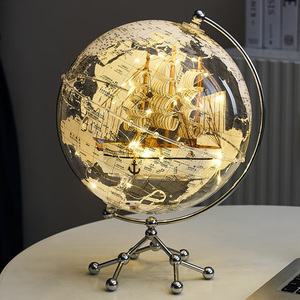
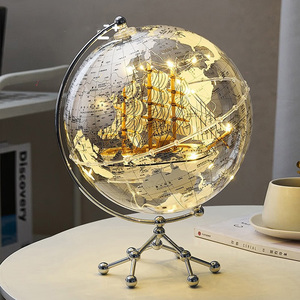
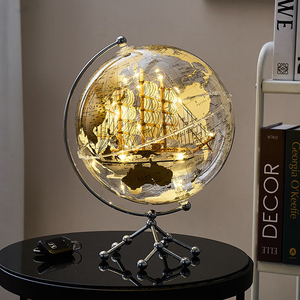
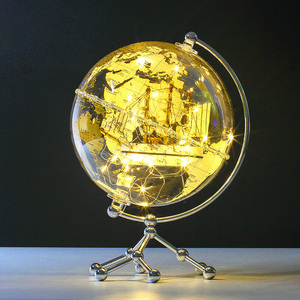
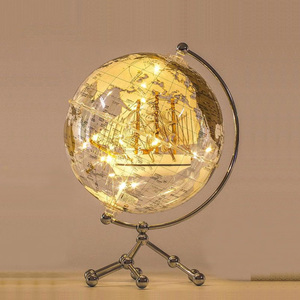




















Suppliers offer these types of collectible wooden sailing ships in bulk to buyers online in huge quantities.
This type of wooden sailing ship is constructed with designs that resemble ships from centuries past. Advanced artisans use old construction techniques for authenticity. These ships come with intricate details like hand-carved figureheads or brass accents. Most often, they get painted in muted colours or left natural to look aged. They serve as historical décor for those interested in maritime history or collecting antiques.
As the name suggests, this version of sailing ships uses modern shipbuilding techniques to create accurate representations of contemporary sailing vessels. Such ships got created out of wood for historical representation, but they also offer an insight into modern sailing technology. The ships are usually varnished or painted bright colours, making them a more contemporary decorative item. They are perfect for people who are still fans of sailing but prefer more modern aesthetics.
Miniature sailing ships are popular among collectors with limited space. Skilled artisans build these ships to be buffs of full-sized models. They replicate famous ships or types of ships in smaller dimensions. These ships are often displayed in cases or on shelves and are easy to transport. Collectors frequently buy them as a hobby, or retailers stock them as items for coastal-themed gifts.
Ship-in-a-box kits are wooden sailing ships for hobbyists. The kits provide pre-cut wooden pieces for the model of the sailing ship to be constructed by the buyer. The buyers might construct or get the ship constructed. Ship-in-a-box kits are ideal for providing entertainment and education to collectors. They also have a final product that’s a fine piece of art for display.
This type of sailing ship model is used for making sailing ships under markets. They are used for making waves and come in practical colours. Market sailing ships are not just used for making waves. They are also useful as teaching props and décor items. These ships are perfect for people who wish to learn about sailing and enjoy aesthetics simultaneously.
Multiple types of designs for sailing ship models have various aesthetic themes and practical functionalities.
These designs are based on historical ships, like galleons, clipper ships, and brigantines. The details include multiple masts, rigging lines, and sails. Artisans use hardwoods like mahogany, teak, and pine to depict mass details and get long life. The designers craft the hull of the ship to be sleek and curved to show the original shape of the sailing ship.
These designs get inspired by the culture of people living on the Island and coastal regions. They use more brightly stained wood and different shaped boats than the Western-style models. These boats represent the sailing vessels of a particular community. They also act as a tribute to the sailing styles and stories of particular cultures.
This kind of design is preferred by collectors who want a more contemporary take. The models resemble modern sailing yachts or racing boats. The models use lesser mass and rigging, making it easier to keep the space uncluttered. Designers make such models from thin plywood and leave the finish pale or dark for a modern look.
Many wooden sailing ship models get designed purely for decoration purposes. These ships generally do not represent any specific ships. The ships use different types of wood and colours for the owners to combine the ships with different interiors. The hull and sails get produced intricately. However, the practicality of such details gets compromised as they are for decorative purposes. Such models get produced with the hope that they will blend well with interior designs.
Some mounted or suspended sailing ship models are functional, but that is not the case with most of them. The models include ship displays meant for educational purposes. Such models get produced on a specific scale to serve as study aids. Carpenters use a combination of rigorous detail and sturdy construction in such designs.
This is the interesting part where the buyers and stockists should read and digest. Several aspects of the wooden sailing ship model must be considered to choose the right one.
The size of the sailing ship model determines how easy or difficult it is to find a space for it. Larger-sized models are usually more popular with hardcore collectors since they offer more details and are more visually impactful. However, they also cost a lot and require spacious display areas. Miniature sailing ships are more manageable, but then the intricacy of detail might get sacrificed.
Wood is the primary material of which sailing ship models are made. The most commonly used are hard woods like mahogany, teak, and pine. Each of these woods adds a unique element to the ship model. Mahogany has a pale and dark grain, making the model smooth, lustrous, and tough. Pine is lighter but cheaper. It is easy to carve and displays a warm light grain. Look for ships which are constructed out of quality material so they don’t break easily.
Sailing ship models get produced by two types of crafters: professional ones and those who do it as a hobby. The artisan's skill level directly affects the amount of detail and accuracy in the model. Models produced by professionals usually cost more. But, they are more intricately detailed, use quality materials, and are sturdier. Collectors who are after quality seek after fine craftsmanship models. Practically made models are good for people who are just starting or for exhibits.
Historically inspired sailing ship models take lots of time and attention from the shipbuilders as they have to take care of every little detail. These ships are perfect for collectors who are into history. On the other hand, decorative sailing ship models are less about accuracy and more about the looks they have to put on. The artists choose bright colours and sleek designs which may or may not be representative of any real ship. These models are preferred by people who want to enhance the beauty of their houses, offices, or other spaces. They don’t bother about the history behind the ship.
Wooden sailing ship models are available in many price ranges. Less expensive ships are great for beginners and people who want something as a keepsake. Ships that are costly are for serious collectors and people who want a work of art in their homes. Price is an important factor when choosing a model, so it’s important to keep what the model will be used for in mind.
At the following places, sailing ship models create an interesting and visually pleasing environment.
Collectors add wooden sailing ships to enhance their living room, study, or office. The models add a coastal or maritime touch to any room, mainly if the space got designed in beach or nautical style. Ideally placed in the living room, these models act as conversation starters. They also act as a focal point or a part of a gallery with other nautical or historical artworks.
Most museums have models of wooden ships in all dimensions of the sea. These models represent the construction history of sailing ships. They also show various maritime cultures. Many models get produced to show specific ships. They help visitors understand the evolution of shipbuilding techniques and the importance of sailing in maritime history.
Educational Institutions
Schools and colleges get models of sailing ships for their history, geography, and physics classes. These models represent experiments with buoyancy and propulsion. Such projects generally explain the advances of shipbuilding from ancient time ships to modern-aged ships. They also offer practical understanding for students learning about maritime history and different cultures.
Many food joints and cafes that have a beach or nautical theme place wooden sailing ships in their interiors. The ships remind the patrons of the beach or sea if the restaurant's theme is about the sea. They place these models in things like on mantlepieces, over the head, and in small showcase cabinets. The models also help the customers understand the theme of the place more. It sometimes even sparks up conversations among patrons, making it a more enjoyable atmosphere.
Wooden sailing ships are popularly sold in gift shops and stores. They are popular gifts for anyone fascinated by the sea or ships. Shops place these models in most of their stock spaces. It’s because they cater to visitors looking for coastal-themed souvenirs or unique pieces of art for their homes. Collectors also gift these ships as prize pieces to other collectors.
Shipbuilders use these ship models in shipyards to build ships. They depict the vessel's rigging system, sail, hull form, and masts, among other essential and practical aspects. The shipbuilders get a better understanding of how sailing ships function in the water. They also decipher how different navigational techniques were used when the models were built to scale and accurately.
A. Hardwoods such as mahogany, teak, and pine are the primary materials used in constructing wooden sailing ship models. Mahogany, with its rich, dark grain, offers a robust and visually stunning surface, while teak, known for its weather-resistant properties, ensures both durability and elegance. Pine, being lighter and more affordable, serves as a practical choice for intricate carvings. These hardwoods not only enhance the model's aesthetic appeal but also contribute to its longevity, allowing the ship models to withstand the test of time.
A. Just like any other piece of furniture, maintain wooden sailing ship models by dusting them regularly. Use a soft, dry cloth to wipe the model. Do not use moist clothes to avoid spoiling it. Avoid keeping the model in direct sunlight. Such a move may lead to the colours fading and the wood cracking. Apply a wax-based polish every few months to rejuvenate the wood and protect it. Stabilize the model with ship mounts so it doesn’t fall off. If the model has sails, check the sails often so they don’t gather dust or get spoilt.
A. It’s not ideal to place sailing ship models made of wood outside. Constantly exposing them to weather elements such as rain, sunlight, or wind will ruin the model. The sun will dry out and darken the wood. It might also crack the wood. Moisture leads to warping. The wind may break or topple the ship if it’s of a large size. Place the ship models inside where they create an interesting conversation piece for guests. The place has to be sheltered from elements, though, if one wants the models to remain intact for a long time.
A. If one is starting as a collector of wooden sailing ship models, it's better to go for a smaller or medium-sized model first. Large models are often complex and can be costly, which may be overwhelming for a beginner. A smaller or medium-sized model is simple to handle. It is easier to understand the rigging, hull, and other minute particulars. After getting some experience and having a clear understanding of interests, one can progress towards getting larger models. They are great for investing time and learning and will be good for helping one have a greater collection.
A. Collectible wooden sailing ship models are usually produced to represent historical ships, contemporary sailing vessels, or traditional boats. Models that are made of ship wood sailing are produced by famous vessels from history. They serve to reproduce maritime history for collectors and enthusiasts. They act as functional and educational items.